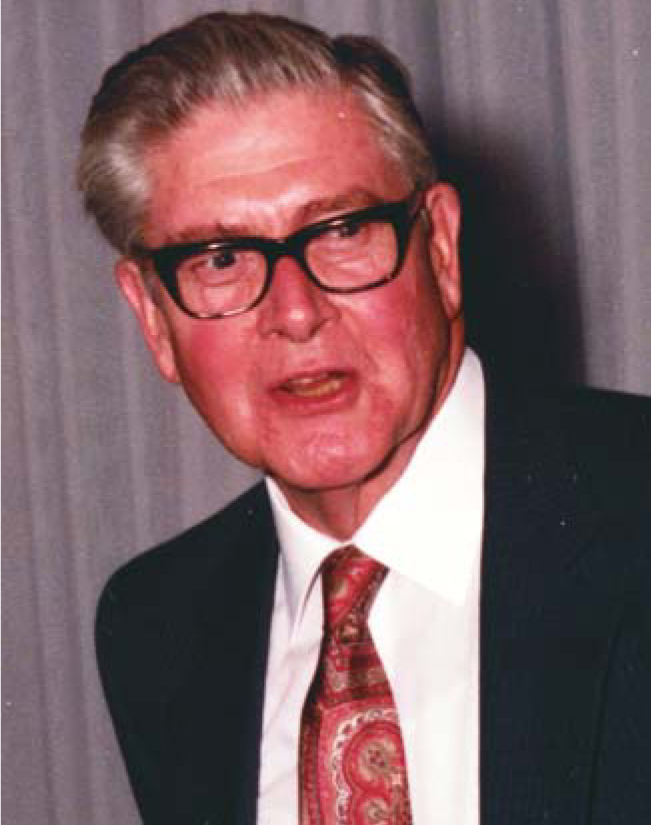William Westerfield Havens Jr
DOI: 10.1063/1.1897576
Known to his many friends and acquaintances as Bill Havens and officially as W. W. Havens Jr, the subject of this obituary made major contributions to nuclear physics research, the Allies’ victory in World War II, international efforts to use nuclear energy for peaceful purposes, the administration of Columbia University, and the American Physical Society (APS). Havens was born in New York City on 31 March 1920 and died there on 29 June 2004 of complications from leukemia.
After graduating at age 19 with a BS in mathematics from the College of the City of New York, Havens embarked on graduate studies in physics at Columbia University, where he received an MA in 1941 and his PhD in 1946. His thesis, under John R. Dunning, was on the feasibility of constructing a time-of-flight neutron spectrometer.
Havens was on Columbia’s faculty from 1940 until his retirement in 1985. From 1941 to 1945, he worked on the Manhattan Project. Together with James Rainwater, he built the time-of-flight spectrometer envisaged in his thesis, and it and several Havens-designed successors were used for decades in important research. Not only did they allow very precise testing of theories of nuclear structure, but they also supplied fundamental information to the University of Chicago’s Metallurgical Laboratory for the design and construction of the Oak Ridge and Hanford reactors and for Los Alamos.
After the war, Havens and his collaborators continued to obtain fundamental neutron cross-sectional data for use in the US nuclear energy program, both for thermal and fast-breeder reactors. From 1948 to 1951, Havens worked in meson physics, designing and constructing equipment to be used with the new Columbia synchrocyclotron at Irvington-on-Hudson. He then returned to neutron physics and was active in that field for the remaining decades of his research career. Having become a full professor at Columbia in 1955, he served as director of its division of nuclear science and engineering from 1961 until 1977. From 1976 until 1985, Havens directed Columbia’s energy research center.
Havens contributed to numerous national and international bodies concerned with using nuclear energy for peaceful purposes. He was a technical adviser to the US delegation to the Atoms for Peace Conference, a member of the cross-section advisory committee of the US Atomic Energy Commission, chairman of the American-European nuclear data committee from 1970 to 1972, and an adviser to the International Atomic Energy Agency.
One year after he joined APS in 1940, Havens began his service to the society as a volunteer on the committee that organized the society’s annual meetings, which were then held at Columbia. He became deputy secretary in 1955 and executive secretary 12 years later. He stayed on in that position through 1990.
When Havens took over as executive secretary, which then was a part-time job, APS had barely the equivalent of two full-time employees, not counting those in the publications office at Brookhaven National Laboratory. When he retired as full-time executive secretary, there were close to 140 employees: Some were housed in the American Institute of Physics’ headquarters building in Manhattan; others, in AIP’s offices on Long Island, New York; and nearly 100 editorial employees were located on eastern Long Island. What had started as a mom-and-pop operation had become the headquarters of a society with 40 000 members, 13 divisions, 6 topical groups, the forum on physics and society, and 56 committees—a society that awarded numerous physics prizes, published 70 000 journal pages, and held or sponsored nearly 50 national and international conferences each year.
Havens helped to initiate major changes, including one in the face of opposition by then secretary would be torn apart unless the specialized divisions were given more autonomy and power, Havens, then deputy secretary, worked with a committee comprising past presidents. They prepared the fateful enabling constitutional amendments that were adopted in 1966. The changes in APS’s modus operandi that led to the large growth in staff and the move to a downtown office, however, were not on Havens’s agenda at the time he assumed office as the executive secretary. For a number of years, he maintained that the executive secretary should continue to be an active physicist who did not devote more than one day a week to APS work.
Thus, Havens was a progressive force, but a most reluctant “empire builder.” He was also a prodigious worker. He not only arranged and ran all the general scientific meetings and edited the Bulletin of the American Physical Society, but was a voting member of just about every important AIP and APS organ and committee. He participated as a member, adviser, or facilitator in many of APS’s panel on public affairs studies and in externally funded studies that APS undertook during his term of office.
In his later years, Havens appeared to some as conservative, but that was often because, possessed of a phenomenal memory, he scotched “new” proposals that he knew had been tried before and had failed. Despite the society’s growth in size and activities during Havens’s tenure, APS “sustained its initial innocence,” observed David Lazarus, editor-in-chief (1981-91) of APS’s journals (see Physics Today, May 1991, page 59
As treasurer of APS from 1985 to 1996, I had the opportunity and pleasure of working with Havens nearly every day during the years our terms overlapped (1985-90). I remember our mandatory lunches in the cafeteria of the engineering societies’ building, which other physicists in the office frequently attended—not for their gustatory delights, but for their collegiality, camaraderie, and effectiveness in getting APS’s work done. In the obituary he prepared for Darrow in Physics Today (November 1982, page 83

William Westerfield Havens Jr

[Author’s Note: The source of much of this material is my article entitled “To Advance and Diffuse the Knowledge of Physics: An Account of the One-Hundred-Year History of the American Physical Society” (American Journal of Physics, July 2000, page 596).]
More about the Authors
Harry Lustig. Santa Fe, New Mexico, US .
